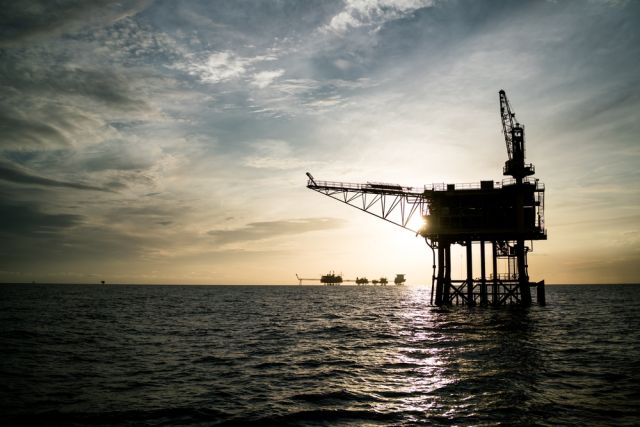
Shell Plc’s subsidiary Shell Trinidad and Tobago Ltd. has taken a final investment decision (FID) on the Manatee cross-border gas field straddling the maritime borders of Trinidad and Venezuela. (Source: Shutterstock)
Shell Plc’s subsidiary Shell Trinidad and Tobago Ltd. has taken a final investment decision (FID) on the Manatee cross-border gas field straddling the maritime borders of Trinidad and Venezuela.
Manatee will start production in 2027 and add much-needed gas volumes to Trinidad and Tobago’s gas production profile.
Manatee’s production is expected to peak at 104,000 boe/d or 604 MMcf/d of natural gas, Shell said in a July 9 press release. This represents around 19% of Trinidad’s average gas production of 2,367 MMcf/d in March 2024, according to MEEI data.
“Today’s announcement by Shell is a great achievement for Trinidad and Tobago,” Stuart R. Young, who heads the twin-island country’s Ministry of Energy and Energy Industries (MEEI), told Hart Energy July 9 in an emailed response. “This development will be the most significant hydrocarbon development in Trinidad and Tobago.”
Trinidad’s gas production has in general trended downward after peaking at 4,52 MMcf/d in Feb, 2010, according to MEEI data, owing to declines at mature fields and a lack of attractive fiscal reforms. However, over the near term, a number of gas developments in Trinidad and Tobago are expected to continue to add to the Caribbean country’s existing gas production profile.
“This is a very significant development for Trinidad & Tobago and will help create stability for the country’s gas industry and by extension, our energy services companies,” the Energy Chamber of Trinidad and Tobago said July 9 in a blog post on its website.
RELATED
CERAWeek: Trinidad Energy Minister on LNG Restructuring, Venezuelan Gas Supply
The Manatee gas field will supply Trinidad and Tobago’s Atlantic LNG facility, maximizing Shell’s asset potential by expanding utilization at existing LNG plants, Shell said in its release.
The announcement bodes well for Trinidad’s four-train 14.8 million tonnes per annum (mtpa) Atlantic liquefaction plant. On an operational front, Atlantic LNG continues to operate with just three trains, owing to a scarcity of gas supply, and until recently, disagreements among partners in the facility. Production at Train 1 has been halted since Dec. 2020, according to the MEEI data.
Additionally, a number of Trinidad-based plants that produce ammonia and methanol for export and have been impacted by the gas shortage will also benefit from the uptick in production to come from Manatee and other developments in the future.
“This project will help meet the increasing demand for natural gas globally while also addressing the energy needs of our customers domestically in Trinidad,” Shell’s Integrated Gas and Upstream Director Zoë Yujnovich said in the release.
Manatee’s development route
Manatee is an undeveloped gas field forming part of the Loran-Manatee cross border reservoir. Manatee is located in the East Coast Marine Area (ECMA) in Trinidad and Tobago.
The Loran-Manatee field was discovered in 1983 and subsequently appraised via four wells, according to Shell, which operates Manatee with a 100% interest. Loran represents the portion of the field in Venezuelan waters and Manatee represents the portion of the field in Trinidad waters.
The established gas in place in the Loran-Manatee field is approximately 10.1 Tcf. Of the total, 2.7 Tcf or 26.94% is within the maritime area of Trinidad (Manatee), while 7.4 Tcf or 73.06% is within the maritime area of Venezuela (Loran), according to data published by the Office of the Prime Minister of Trinidad and Tobago.
Manatee will involve a normally unattended installation platform located in the ECMA acreage with eight development wells via a 110 km, 81-cm pipeline that will flow to the Shell-operated onshore Beachfield gas processing facility. From there, the gas will be shipped to Atlantic LNG for the export market, and the National Gas Company of Trinidad and Tobago for the domestic gas market.
Manatee will allow “Shell to competitively grow its integrated gas business by building on development efforts in the ECMA, one of the country’s most prolific gas-producing areas,” Shell said in its release. “The ECMA is currently home to Shell’s largest gas-producing fields in the country including Dolphin, Starfish, Bounty and Endeavour.”
Recommended Reading
Exxon Slips After Flagging Weak 4Q Earnings on Refining Squeeze
2025-01-08 - Exxon Mobil shares fell nearly 2% in early trading on Jan. 8 after the top U.S. oil producer warned of a decline in refining profits in the fourth quarter and weak returns across its operations.
Phillips 66’s NGL Focus, Midstream Acquisitions Pay Off in 2024
2025-02-04 - Phillips 66 reported record volumes for 2024 as it advances a wellhead-to-market strategy within its midstream business.
Equinor Commences First Tranche of $5B Share Buyback
2025-02-07 - Equinor began the first tranche of a share repurchase of up to $5 billion.
Q&A: Petrie Partners Co-Founder Offers the Private Equity Perspective
2025-02-19 - Applying veteran wisdom to the oil and gas finance landscape, trends for 2025 begin to emerge.
Rising Phoenix Capital Launches $20MM Mineral Fund
2025-02-05 - Rising Phoenix Capital said the La Plata Peak Income Fund focuses on acquiring producing royalty interests that provide consistent cash flow without drilling risk.
Comments
Add new comment
This conversation is moderated according to Hart Energy community rules. Please read the rules before joining the discussion. If you’re experiencing any technical problems, please contact our customer care team.





